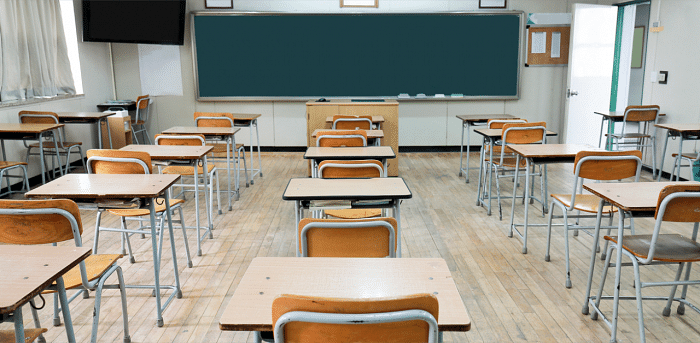
The past few weeks have shown us how monsoon rains can cause havoc in big cities of the country, which are usually built on the promise of being sustainable and equitable. Bengaluru is one of the prime examples.
The recent floods due to heavy rainfall started a discussion on who is responsible for this situation in what is called the ‘Green City of India’. While the chief minister blamed the current situation on the wrong-doings of the previous governments, the other ministers of the state blamed the migrants. Consequently, the hashtags #LeaveBengaluru, #GetLostMigrants and #Bengaluru_nammadu were trending on social media platforms. The social media were flooded with pictures of employees taking boats and tractors to their offices, and of the submerged basements and ground floors of elite and high-priced societies.
Amidst all this, we ignore that it is the school-going children who suffer the brunt of it. As it happened during the peak of the pandemic, the schools across the city were the first to be shut down again without any specific plans on how their education might continue during such closures. This brings us to the question – is it prudent to worry about the educational rights of our children when the urban spaces are under water, threatening life and property? And, the answer is simple – YES.
Education is a fundamental right and it should be operationalised in a manner akin to that. We also need to understand that education cannot and must not be perceived as a standalone right and should be accorded due recognition as a multiplier right - a right which, if realised, can positively impact the realisation of other rights. The interdependent and interlinked nature of educational rights with rights to life and development, identity, information and participation, is much researched upon.
According to the UN International Panel on Climate Change, climate change will have widespread effects on human life and natural systems. It is a key causative factor in increased heat waves, flooding, droughts, intense tropical cyclones, rising sea levels and loss of biodiversity.
The average number of disasters caused by natural hazards has increased in the last 20 years from 200 a year to more than 400, and this is predicted to increase by as much as 320 per cent in the next 20 years. People, and particularly children living in countries with weak governance and poor education systems, are the ones whose education rights are set to be impacted both directly - due to damage to school and relevant infrastructure (connecting roads, bridges), and personal injury, and indirectly -- through absenteeism, unplanned school closures, and forced migration. As per UNICEF’s Children’s Climate Risk Index, almost every child on earth (>99 per cent) is exposed to at least one of the major climate and environmental hazards, shocks and stresses.
The UN Framework Convention on Climate Change and the Paris Agreement 2015 recognise and emphasise the importance of education in enhancing climate actions. Education is considered a crucial component of the two main strategies to address climate change: mitigation and adaptations. Mitigation requires interventions to reduce greenhouse gas (GHG) concentrations in the atmosphere. Environmental and climate change education can effectively bring about the required awareness among children regarding the appropriate mitigation measures. It also aids in adapting to the changing climate, both in the short and long run. As per the global estimates by UNICEF, investments that improve educational outcomes can considerably reduce the overall climate risk of 275 million children.
In such a scenario, we as citizens must insist on making our schools climate resilient, and imparting knowledge about the three primary aspects of climate resilience – “Preparation, Adaptation, and Recovery”. Preparation is about improving the infrastructural facilities and communicating the risks to the students; adaptation is about continuously recognising such risks, upgrading the infrastructure and informing the people accordingly, and recovery is about planning and reserving resources by quickly assessing damages and commissioning repairs.
Some of the immediate measures that the state government can undertake are to prescribe appropriate standards to improve and upgrade the infrastructural facilities of schools to ensure the safety of children. Further, as advocated by the National Education Policy, 2020, the curriculum must include climate change education across all levels of schooling.
However, the recent Project Approval Board (Samagra Shiksha) minutes show that the state is still not thinking about how to incorporate these measures into school education. Considering that numerous school-going children across the state continue to be affected due to excessive flooding every year, the plight of such children must not be ignored.
(Pichhili is a Project Fellow and Rai is a Research Fellow with the Education Team at Vidhi Centre for Legal Policy.)